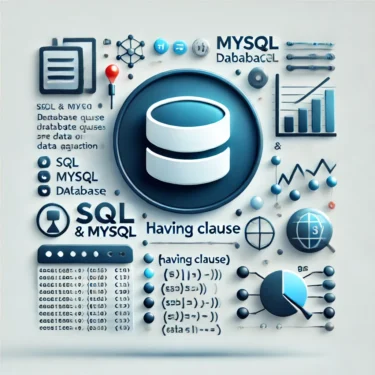1. Overview of the MySQL NOW() Function
The MySQL NOW() function is used to easily retrieve the current date and time within the database. By leveraging NOW(), you can obtain timestamp information useful for data insertion or logging. Despite its simplicity, it is a powerful tool widely used in practice.
Basic Syntax of NOW()
The syntax of the NOW() function is very straightforward. The following query retrieves the current date and time:
SELECT NOW();The result is returned in the format YYYY-MM-DD HH:MM:SS. For example, if the date and time is October 24, 2024, at 16:30, the result would be:
2024-10-24 16:30:00Additionally, the NOW() function returns the current date and time based on the database’s time zone. This ensures consistent time management across the entire system.
Use Cases of NOW()
The NOW() function is particularly useful in the following scenarios:
- Logging: Automatically record the time of data modifications or insertions.
- Timestamps: Track the timing of user actions.
- Time-based Filtering: Extract data that occurred within a specific period.

2. Basic Examples of Using NOW()
Let’s look at a basic example of retrieving the current date and time with the NOW() function:
SELECT NOW();This query returns the current date and time. In addition to string format, you can also obtain the result in numeric format. Using the following query, the date and time is returned in numeric format (YYYYMMDDHHMMSS):
SELECT NOW() + 0;For example, the result may be returned as 20241024163000, which is useful when handling data in numeric format.
Specifying Fractional Seconds Precision
The NOW() function allows you to specify fractional seconds precision. You can set the precision as an argument:
SELECT NOW(3);This query returns a result with three digits of fractional seconds precision, such as 2024-10-24 16:30:00.123. This feature is especially useful in systems that require sub-second accuracy.
3. Difference Between SYSDATE() and NOW()
Another function similar to NOW() is SYSDATE(), but they behave slightly differently:
- NOW(): Retrieves the time at query execution and keeps the same time throughout the statement. Even if the transaction runs for a long time, it returns the same result.
- SYSDATE(): Retrieves the current time at each step of the query. This means that during long-running transactions, it provides real-time timestamps.
For example, in long-running batch processes, SYSDATE() provides more accurate results, while NOW() is preferred when transaction consistency is required.
Example of Differences Within a Query
Here’s an example query showing the difference between SYSDATE() and NOW():
SELECT NOW(), SYSDATE();The results might look like this:
NOW(): 2024-10-24 16:30:00
SYSDATE(): 2024-10-24 16:30:01SYSDATE() reflects the real-time difference at execution, while NOW() preserves the timestamp from the query’s start. Choosing the right function depends on your use case.

4. Practical Use Cases of NOW()
The NOW() function is highly useful in specific scenarios. For example, to automatically record the insertion time of data:
INSERT INTO users (username, created_at)
VALUES ('example_user', NOW());This automatically saves the current time into the created_at column when the record is inserted. This is especially valuable for logging or event tracking.
To extract data created within the past 7 days, you can use NOW() as follows:
SELECT * FROM orders
WHERE order_date >= NOW() - INTERVAL 7 DAY;This query retrieves all records created in the last 7 days relative to the current time. NOW() is highly effective for time-dependent data extraction.
5. Considerations When Using NOW()
There are a few important considerations when using NOW(). In particular, it may affect transaction consistency, so you should be mindful of the context in which it is used.
- Behavior Within Transactions: The NOW() function returns consistent results within a transaction, ensuring the same time even in long-running processes. This is crucial for maintaining data integrity. However, if you need real-time timestamps, SYSDATE() is more appropriate.
Also note that the NOW() function depends on the time zone of the system, which means results can vary depending on settings. For global applications, this factor must be carefully considered during design.



